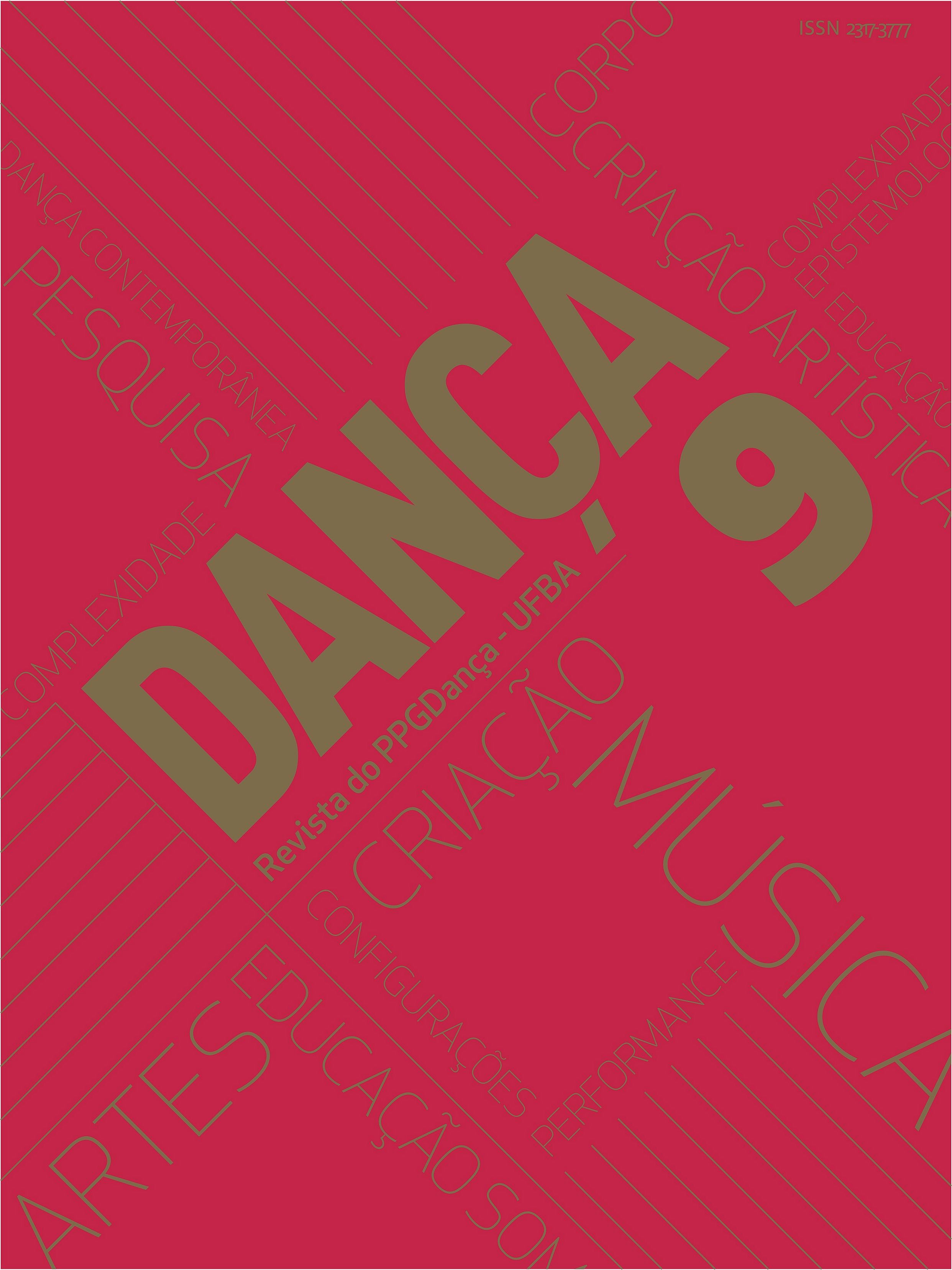QUEM LUTA E COMO?
contextos artísticos na Lia Rodrigues Companhia de Danças
DOI:
https://doi.org/10.9771/2317-3777dana.v6i1.47261Abstract
This article proposes “artistic context” as a means of understanding the social dimension of art, inciting questions about whiteness (AHMED, 2012; BENTO, 2002; SOVIK, 2009) and its action and emergence territories. The question is: who
struggles and how? Firstly, the idea of struggle guides the resistance to a neoliberal capitalist norm and to its intricate relationship with institutionalized art (KUNST, 2015). These struggles are expressed differentially in the bodies, based on social markers of difference, and nuanced from the reading imbricated with issues of belonging, observed from the experience of the Lia Rodrigues Companhia de Danças and the territory of the Complexo de Favelas da Maré, in Rio de Janeiro, suggesting a historical non-racialization in the field of institutionalized arts. In almost twenty years of activity, most black dancers from the Companhia today come from Maré, where Lia Rodrigues also runs a dance school. The color of the company has changed and,with it, its artistic practices and political aims, based on the interaction with local community organizations. This text reflects on the complex negotiations of Lia Rodrigues’ company, theorizing about the limits and challenges of the struggles, depending on their positionality.
Downloads
Downloads
Published
How to Cite
Issue
Section
License
A partir da submissão do artigo, resenha, pensata ou ensaio, entende-se como automática a cessão dos direitos autorais para a Revista, uma vez tendo sido aprovado e aceito para publicação.

Dança: Revista do Programa de Pós-Graduação em Dança de http://www.portalseer.ufba.br/index.php/revistadanca/index é licenciado sob uma Licença Creative Commons Atribuição-NãoComercial 3.0 Não Adaptada.


